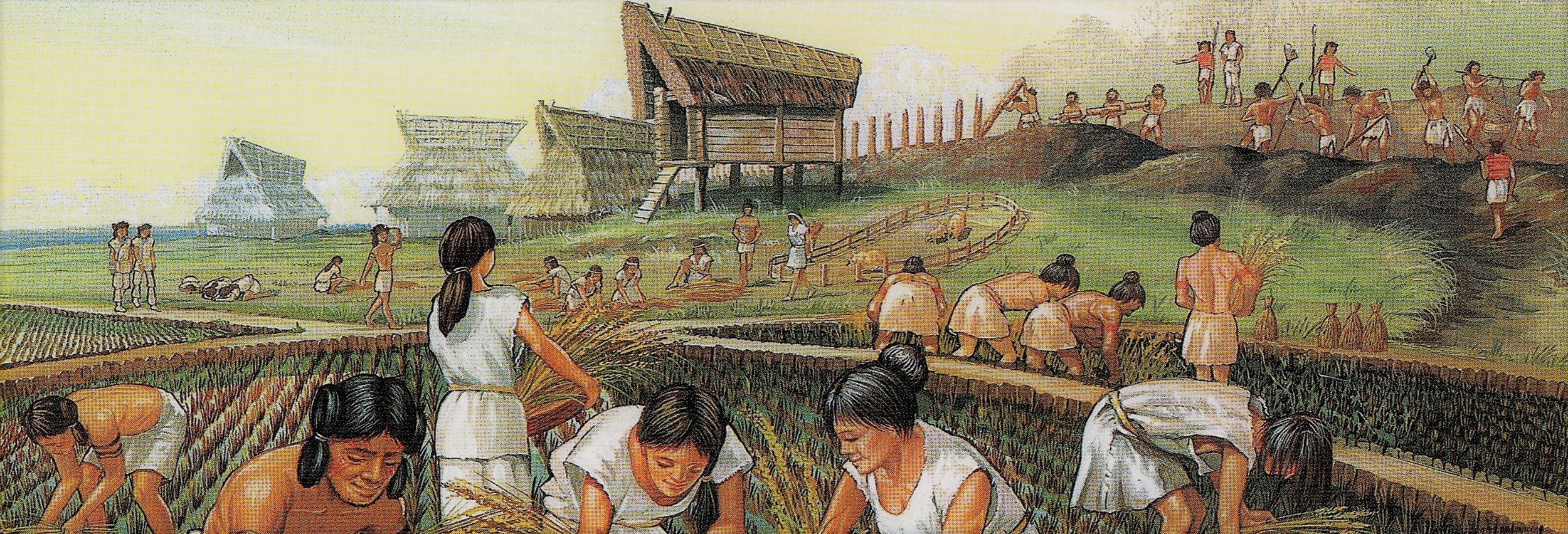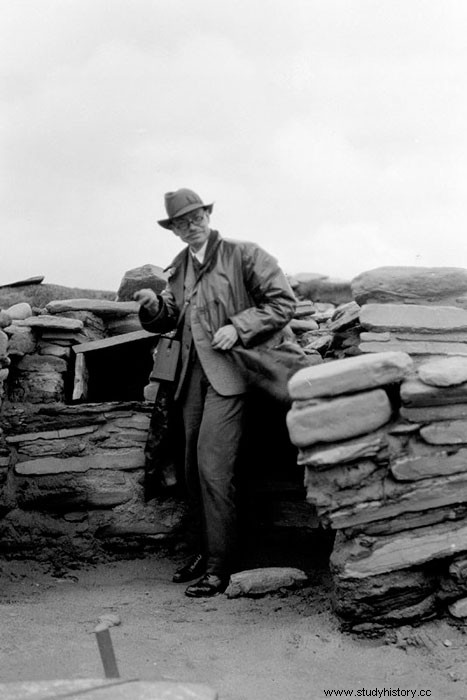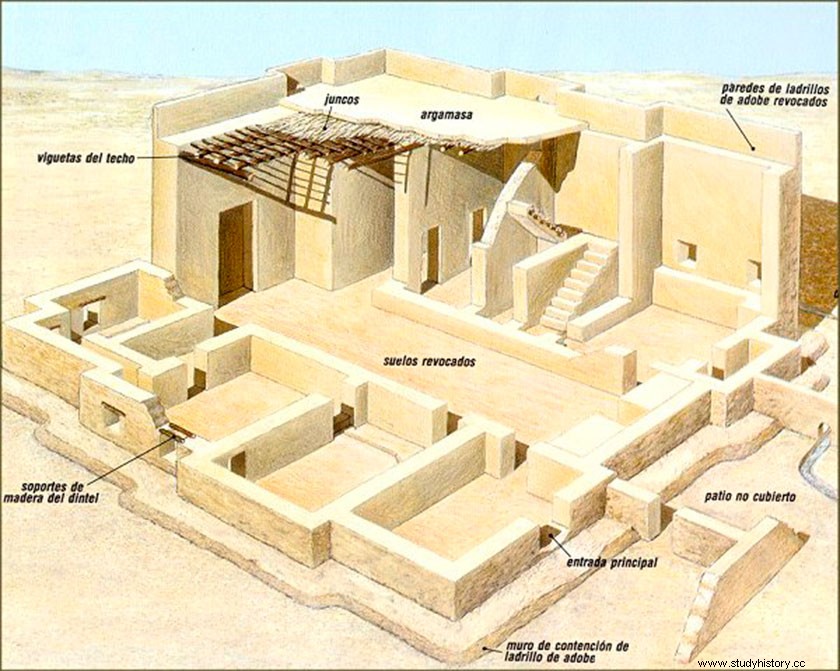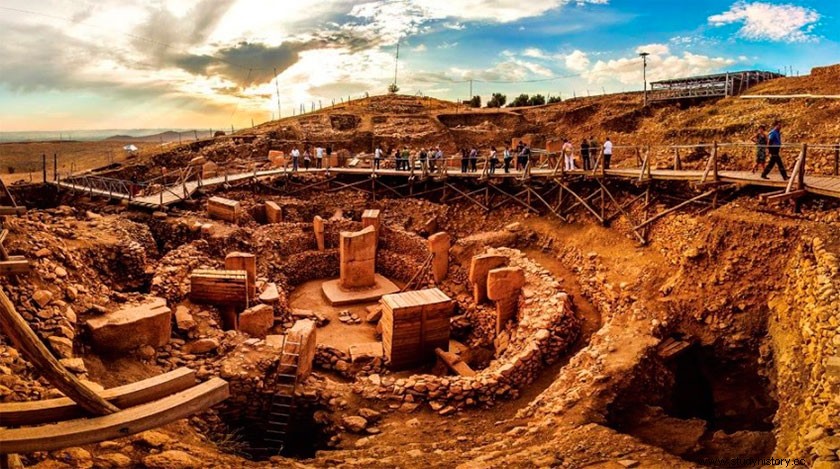
According to the experts, today we are immersed in the that we could call the third great revolution in the history of mankind. The technological revolution that we do not know for sure where it can take us, had two precedents; the Industrial Revolution of the 18th century and the one that concerns us today, the Neolithic Revolution It is worth saying that without the latter, the other two would not have been impossible. Therefore we can affirm that the Neolithic is the greatest change in the history of Humanity .
I make such a strong statement my own, and obviously it can be discussed as much as you want. In short, since the beginning of prehistoric studies in the 19th century, the Neolithic Revolution has been taken as one more step in the progress of humanity. But since the 20th century, prehistorians, archaeologists and anthropologists have focused on understanding the mechanisms that led our ancestors, from living off nature to trying to domesticate it , something by the way that it seems that we have not achieved. From this moment we will know the main contributions that experts have made during the last century to understand this step.

The fertile crescent where the Neolithic emerged.
Before going directly into the different hypotheses, it is necessary to note that today there is a general consensus that the Neolithic began in the Near East about 10,500 years ago, from where it spread to China, Europe, Asia or America. More discussed are the processes of this expansion, some see it as such and others as separate evolutions of the different prehistoric communities. Be that as it may, the different hypotheses are based on the Neolithic of the so-called Fertile Crescent in the Near East.
The Neolithic Oasis.
Vere Gordon Childe It was the prestigious Australian prehistorian based in London who put the first hypotheses on the table. Especially in his book published in 1925 on the origins of European civilization.

Gordon Childe
For our protagonist two aspects are inseparable, the Neolithic Revolution and the Urban Revolution, that is, agriculture, livestock and cities were born hand in hand. The proof of this is that the oldest cities in the world are located in the so-called Fertile Crescent, that is, where neolithization began. Like Jericho, for example, walled for almost 9,000 years.
Gordon Childe's explanation is based on climate change produced with the arrival of the Holocene. Before the latter, the Ice Age during the Paleolithic cooled the planet turning Europe into an icy steppe and the Middle East into one of the places with one of the most benign climates in the world. Thanks to it, the meadows and trees attracted homo sapiens and various animal species, making this corner one of the most populated.
During Holocene warming, the Middle East gradually became the current landscape of deserts and oases near rivers. In this way, men and animals were forced to gather around the Fertile Crescent, where humans began to practice agriculture as a means of subsistence and animals were domesticated by contact with homo sapiens.
The domestication was not exclusive to the Neolithic Oasis.
In the early 1960s new proposals began to emerge, specifically by the American Robert Braidwood , one of the first to develop studies on the Neolithic through New Archaeology. This last specialty begins to incorporate new disciplines to the study of archaeological remains, as in the case that concerns us that botanical and zoological studies are beginning to be taken into account. Supported by these, Robert Braidwood decides to look for the first grains and domesticated animals, and for this he went to the mountains that surrounded the oasis of Gordon Childe. It is not in vain that goats, one of the first animals to be domesticated, had their habitat in them, as well as the grain of wild wheat.

Robert Braidwood
His studies of it were focused on a small site in the mountains of Kurdistan, named Jarmo, a small city of at most 150 inhabitants, which 9,000 years ago practiced agriculture and the cattle ranch As we can see, contemporary to the first evidence of cities such as the previously named Jericho. He then incorporated similar research into his studies in the mountainous areas of Mexico, where other types of crops were domesticated, such as squash, without any evidence of contact between them and the Middle East.

Recreation of the Jarmo urbanization
After putting all this research together he came to the conclusion that Gordon Childe's proposal was unreasonable. For Robert Braidwood, the domestication of plants and animals has nothing to do with the geographical location, but is given by the experimentation of the different communities in pursuit of improving their quality of life.
Work harder to eat more.
A new step is found in the mid-70s, following the pretexts of the New Archaeology, Lewis Binford and Kent Flannary They decide to find out how the agents, both external and internal, influenced the arrival of agriculture and livestock.

Lewis Binford
For them, the arrival of the Holocene meant a rise in sea level after the thaw, as well as a greater number of precipitations. The consequence in areas such as the Fertile Crescent was the increase in animal and plant species, with the chain effect of a significant demographic increase, due to better access to resources.
What at first glance might seem like an Eden ended up becoming an overcrowded space, and certain groups began to migrate to areas less favored by the climate. Precisely the latter have to adapt to the new needs, being the ones that start the path of neolithization supported as Robert Braidwood said in the previous point in the previous experimentation. Therefore, it is easy to deduce that the arrival of agriculture and livestock has to do with the need lost by these groups for food security.
But this point was quickly called into question by a curious experiment. Putting new value on the New Archaeology, and one of its new associated disciplines, in this case ethnography. Flannery's team headed to the most inhospitable areas of the Kalahari region in southern Africa, to see in situ how pre-Neolithic hunter-gatherers might have lived. The work consisted of collecting wild grain and the results were surprising, with only three weeks of harvesting an entire family could survive for a year. This aspect debunked different theories, so Flannery's answer was clear; humans decide to work more, to eat more.
Demographic pressure.
At first glance, one of the simplest hypotheses to explain this step of humanity. M. Nathan Cohen an American anthropologist attributes the birth of agriculture and livestock to demographic pressure. He also tells us that it was not an exclusive phenomenon of the Middle East, but that it is easy to extrapolate it to other parts of the world in different historical periods, without there having to be a connection between them.

Recreation of a house from La Draga, a Neolithic village located in Bañolas.
This last premise is Cohen's greatest contribution, since, as we have seen previously, L. Binford already bet on said demographic pressure. But while the latter told us that this caused the emigration of the first sedentary groups, Cohen rejects it outright, admitting that the entire Neolithic is based on the in situ evolution of groups of new farmers.
The Social Revolution.
Undoubtedly one of the most innovative hypotheses, besides the one we will see below, the one most in line with the study of the human being itself, forgetting the context and giving importance homo sapiens as the protagonist of neolithization.

Barbara Bender
The proposal comes from a sociologist, Barbara Bender, who is clearly committed to the arrival of the Neolithic for a purely social aspect. For her, the hunter-gatherer groups of the early Holocene are well prepared to become sedentary and practice agriculture. The harvest generated the first surpluses, as Flannery said, with three weeks there was enough for a whole year. This aspect generated the need to protect these surpluses and was the cause of the arrival of social classes, it was clear, who had control and the distribution of said surpluses had power.
In short, this was the wheel that man failed to stop. Surpluses gave power, so the adoption of agriculture and livestock came from the need to generate these surpluses.
Religion as a motor of neolithization.
The last of the proposals comes from the French archaeologist Jacques Cauvin, who in 1994 published; The revolution of symbols in the Neolithic. In it he rejects many of the previous hypotheses, to focus on the arrival of agriculture and livestock thanks to religion, which was created in the hunter-gatherer society prior to the arrival of the Neolithic. In other words, neolithization carries with it other aspects than the purely economic ones, such as the need to generate a kind of group synergy, especially in the world of symbolism.

Jacques Cauvin
As if wanting to agree with Cauvin, the same year 1994 some excavations began in Turkey. The Göbekli Tepe place, which after years of continuous work has resulted in the oldest religious sanctuary in the world. It is dated to more than 11,000 years, long before agriculture and sedentarization began.

Gobekli tepe
With all this on the table, the British archaeologist Ian Hodder leaves us on the table a phrase that should lead us to reflection:Agriculture and sedentarization were the culmination of a social and symbolic process, which since the Paleolithic era, human groups carried in situ in relation to each other and the environment that surrounded them.
Conclusions.
We have seen up to six different ways of seeing how the greatest change in the history of mankind took place. We must think that possibly the union of all is the most correct.
But personally there is one aspect that catches my attention; Of all the hypotheses, none speaks of the creative capacity of the individual within a community , which is one of the main characteristics that separate us from other animals. That is to say, today a song writer searches within himself for what can move others, so that they recognize his differential fact. If we extrapolate this fact to the Paleolithic we can see it in the paintings that adorn the caves.
After this we can return to the Neolithic, to think that there could have been a series of individuals who decided to dedicate their differential fact to imitate nature in its creative aspect. Also, possibly these individuals did not have the pressure of climate change, hunger, or a neighbor with greater power that forced you to plant a seed to see what would happen.
The obvious thing is that it was a step without turning back. Since then, the human being has been continuously changing, and certainly more and more rapidly, the world around us. We keep trying to be above nature by continually changing its processes, on a journey where there is no good ending in sight .
Images:commons.wikimedia
